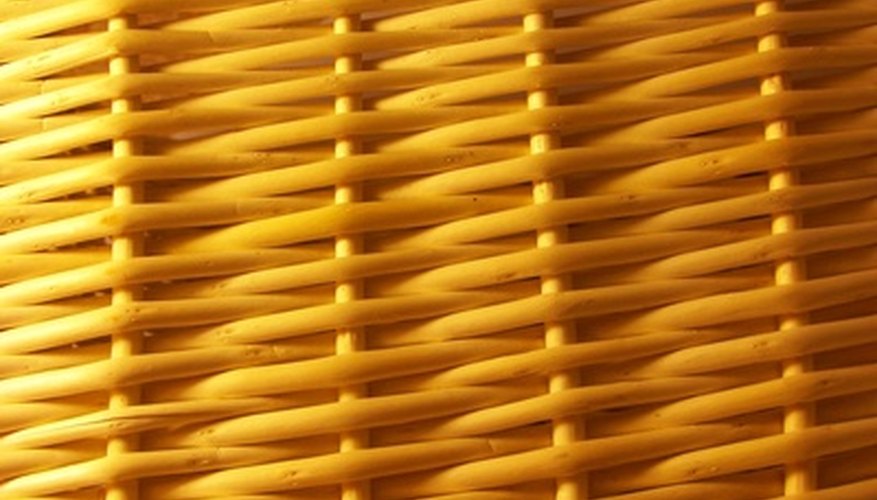Few pieces of furniture are as timeless as well-made wicker. Wicker is a pliable type of wood, yet it stands up to the elements longer than most regular wooden pieces. Most types of wicker are painted at the factory they were produced in with either a coloured paint or a clear varnish that brings out the wood colours. Removing this paint, and especially years of excessive paint, is not an impossible task. Recoloring or revarnishing your wicker after stripping it can transform it to look like a brand new piece of furniture.
Place the piece of wicker you will be working with in a well-ventilated area, such as a garage with the garage door half open.
- Few pieces of furniture are as timeless as well-made wicker.
- Place the piece of wicker you will be working with in a well-ventilated area, such as a garage with the garage door half open.
Lay the newspaper on the floor where you will be working on the wicker piece. Make sure enough newspaper is laid down so that any splatters will be covered, or about 2 feet beyond the wicker piece on all sides.
Place the wicker furniture on top of the newspaper. Weigh down the corners of the newspaper if wind or airflow moves the paper.
Cut the bristles of the 1-inch paint brush with the scissors so only 1 inch of bristles remain.
Put on the gloves and safety goggles. This will keep your hands and eyes safe from any splashing or spilling chemicals.
Wipe away as much paint as you can with the shortened paintbrush if the paint is already chipping. Only concentrate on paint chips that are already loose enough to remove easily.
- Place the wicker furniture on top of the newspaper.
- Wipe away as much paint as you can with the shortened paintbrush if the paint is already chipping.
Dip the 2-inch paintbrush into the paint stripper, and apply it to the wicker. It is best to start in a single area and work your way around the wicker rather than just coating the entire piece all at one time. Allow the stripper at least 20 minutes to start loosening the paint.
Use the shortened 1-inch brush to remove as much of the stripped paint as possible. Experiment with different brush strokes to remove the paint as much as you can. Start with a circular scrubbing motion, then a perpendicular up and down scrubbing. Finding the best way to scrub the stripped paint is a sort of learning process and varies by each different piece of wicker.
- Dip the 2-inch paintbrush into the paint stripper, and apply it to the wicker.
- Experiment with different brush strokes to remove the paint as much as you can.
Use the toothbrush to scrub away the stripped paint in corners and small crevices. Again, experiment with different scrubbing techniques to find the one that works best. Repeat all the stripping steps until as much paint has been removed from the entire wicker piece as possible.
Allow the wicker to dry for at least 48 hours once all the paint has been removed before refinishing or repainting.
TIP
Try a variety of scrubbing instruments to remove the stripped paint if the paintbrushes are not doing the job. Make sure you are very gentle with the wicker, as it will soften and become very supple and pliable when the stripper has been applied. The wicker will tighten and harden when it dries.
WARNING
It may be impossible to remove all of the paint from a piece of wicker, especially if the paint is newer or completely intact. Many wicker pieces are painted or varnished at the factory. Removal of this paint, depending on quality, may be very difficult. Wicker will "soak up" many colour pigments of paint, especially if it was never varnished or given a clear coat before paint was applied. Repainting the piece may be necessary to cover any colour-stained spots.
